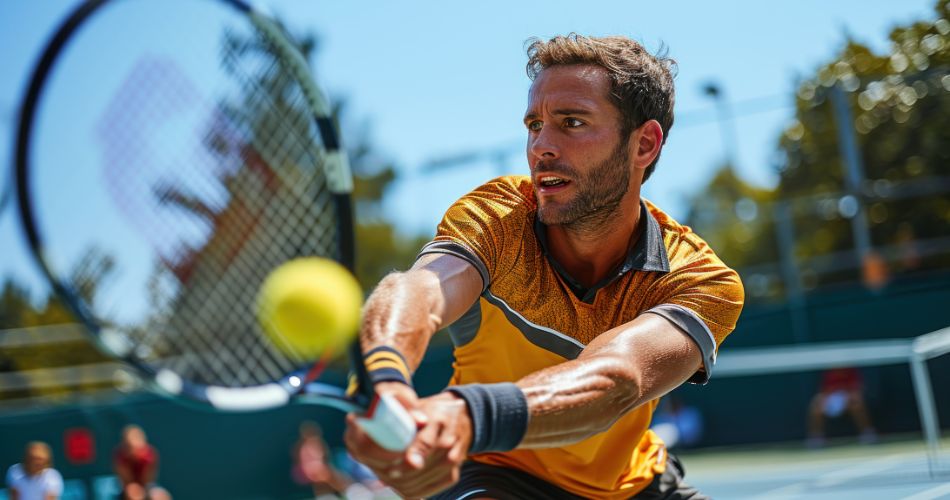NLPadel is an innovative fusion of sports science and artificial intelligence, crafted to elevate the training and coaching experience in the sport of padel. At its core, it integrates Natural Language Processing (NLP) with real-time data analytics to create a seamless interaction between players and coaching systems. Traditionally, padel relied on human observation, intuition, and repeated drills. But NLPadel introduces an entirely new dynamic—where smart algorithms understand not just movements, but words, emotions, and intentions. Through voice recognition, AI can interpret feedback, suggest changes mid-match, and even generate custom coaching plans, allowing players to train smarter, not harder. The vision of NLPadel is clear: to make professional-grade coaching accessible, interactive, and highly personal for every level of player.
How NLP Technology Interacts With Padel Training
The foundation of NLPadel lies in Natural Language Processing, which is the AI discipline that allows machines to understand and respond to human language. In padel training, this means the AI listens to verbal feedback from the coach and player, interprets the dialogue, and turns it into actionable insights. For instance, if a coach says “Your positioning is off during smashes,” the system not only logs that feedback but links it to match footage or movement data for deeper analysis. Over time, the AI identifies patterns—like recurring mistakes or improvements—and adapts its coaching recommendations accordingly. This process transforms basic instructions into a feedback-rich environment where every word spoken on court becomes a potential tool for growth.
Real-Time Feedback That Keeps Players Engaged and Improving
One of NLPadel’s standout features is its ability to offer real-time verbal feedback during training sessions or matches. Using ear-mounted speakers or smart glasses, players receive live suggestions like “tighten your stance,” “anticipate cross-court returns,” or “adjust wrist angle.” These cues, tailored by AI based on previous performances, are like having a personal coach whispering key strategies as the action unfolds. This level of interaction keeps players more engaged, focused, and able to make quick tactical decisions. It also significantly reduces the lag between mistake and correction—an essential component in muscle memory development and tactical refinement.
The Shift From Traditional Coaching to Intelligent Learning Systems
Coaching in padel has traditionally followed a top-down method, where coaches observe, instruct, and repeat. While effective, this model is limited by human attention span and subjectivity. NLPadel replaces this with intelligent systems that learn from every rally, voice command, and game sequence. These systems don’t forget, don’t miss details, and never get tired. They continuously gather data, compare it with historical performance, and provide highly detailed feedback in digestible formats. This shift has given rise to a new era where learning becomes a two-way process—players give input and receive adaptive strategies in return, making the process dynamic and responsive.
Improved Communication Between Coaches and Players
Communication is key in any sport, but especially in padel, where timing, tactics, and teamwork are crucial. NLPadel enhances this communication through voice logging and language modeling. By analyzing how coaches communicate instructions and how players respond, the system helps identify gaps in understanding or execution. If a player repeatedly misunderstands a specific instruction, the AI suggests alternative phrases or cues that better resonate with their learning style. This linguistic tailoring builds stronger coach-player relationships, improves performance under pressure, and reduces misunderstandings that might otherwise stall progress.
How NLPadel Helps Build Player Confidence and Consistency
Confidence is often the hidden engine behind great athletic performance. NLPadel fosters this by reinforcing positive habits and offering encouragement when it’s needed most. When players perform well, the system acknowledges it with affirming feedback. When they stumble, it guides them with constructive, non-intrusive corrections. This blend of motivation and instruction builds a feedback loop that boosts confidence and ensures consistency. Over time, players not only become technically better but also mentally stronger—equipped with the belief that they have real-time support backing every move.
AI-Generated Performance Metrics That Go Beyond Stats
While traditional metrics in padel focus on things like shot speed, win percentage, or court coverage, NLPadel introduces a new dimension of performance measurement: language. It tracks how players respond to instructions, how often they ask questions, how confidently they make decisions, and how emotionally charged their verbal expressions are during a match. These NLP-driven insights are used to understand player temperament, stress levels, and even leadership qualities—making it invaluable not just for physical training, but also psychological development.
NLPadel in Youth Coaching and Player Development
NLPadel is especially impactful in youth programs, where keeping young athletes engaged is often a challenge. Through interactive learning modules, voice-based game simulations, and gamified feedback, NLPadel turns training into an enjoyable experience. Kids can interact with the AI like they would with a virtual coach, learning basic skills in a playful, less intimidating environment. Coaches also benefit by receiving age-specific communication tips and drills tailored to the developmental stage of each child. This blend of education and entertainment makes NLPadel a game-changer in developing the next generation of champions.
Challenges of Integrating NLPadel and How to Overcome Them
Despite its immense potential, adopting NLPadel doesn’t come without hurdles. Some traditional coaches may be skeptical of relying on machines to handle instruction. Others may find the cost of setting up sensors, microphones, and software daunting. Moreover, NLP models require regular updates and contextual training to maintain accuracy. The solution lies in gradual integration—starting with hybrid models where AI assists rather than replaces coaching—and investing in training sessions that help staff understand the system’s benefits. When implemented correctly, NLPadel quickly proves its worth and integrates seamlessly into daily routines.
Use of NLPadel in Professional Tournaments and Advanced Training
Professional teams are already tapping into NLPadel to gain an edge. From pre-match strategy simulations to in-game feedback and post-match analysis, the system provides a 360-degree performance review. Tournaments can benefit as well, using NLPadel systems to enhance umpiring accuracy, deliver AI-generated commentary, or provide tactical insights to broadcasters and fans. As the technology matures, its role in the professional scene is expected to expand, becoming a standard fixture in competitive padel worldwide.
Expert Opinions and Testimonials on NLPadel’s Impact
Coaches who have adopted NLPadel report sharper communication, quicker progress in players, and less burnout from repetitive teaching. Players express feeling more empowered and aware of their game. Meanwhile, AI specialists see NLPadel as a breakthrough application of NLP in sports—a real-world example of how language and performance can intersect. Testimonials from various padel academies highlight measurable improvements in reaction time, tactical awareness, and win rates—solidifying NLPadel’s reputation as a trusted innovation.
How to Get Started with NLPadel as a Player or Coach
Getting started with NLPadel requires only a few components: a smart device like a phone or headset, compatible coaching software, and ideally, wearable sensors that track movement and biometrics. Most platforms offer tutorials and guided onboarding to ease users into the system. Coaches can start by using it during warm-ups and gradually increase its role during full sessions. Players benefit from spending at least 15–30 minutes a day with the AI to help the system learn their habits and tailor its feedback accordingly. The more it learns, the more effective it becomes.
The Future of NLPadel and Its Global Potential
Looking ahead, NLPadel is expected to integrate with virtual reality (VR), augmented reality (AR), and cloud-based systems that allow for remote coaching. Imagine a coach in Spain training a player in Brazil using voice, data, and 3D movement projections. As AI continues to evolve, so will its ability to simulate real-game scenarios, predict injuries, and refine every aspect of a player’s technique. The future of padel is undeniably digital, and NLPadel is leading that charge with a vision that brings precision, personalization, and passion to the court.
Conclusion
NLPadel represents a revolutionary step forward in the evolution of padel training. By combining the power of natural language processing with real-time feedback and performance analytics, it brings coaching into the 21st century. No longer limited by traditional methods, players and coaches can now rely on intelligent systems that listen, learn, and adapt to individual needs. Whether you’re a seasoned professional or a rising amateur, NLPadel offers the tools to elevate your game—both mentally and physically. With its ability to foster better communication, boost player confidence, and personalize every training session, NLPadel isn’t just a tool—it’s the future of smart coaching in padel.
More Topics Worth Exploring:
- Nitos Foreign World Syndrome: Exploring the Reality Behind the Illusion
- Insights from Tatasec.org: A Deep Dive into Cybersecurity Awareness
- Daryn Allene Wood: How She Changed Lives with Heart and Talent
- Elida Schoology: Transforming Education Through Digital Learning
- Freewayget .com: A Complete Guide to the Digital Marketplace Platform



